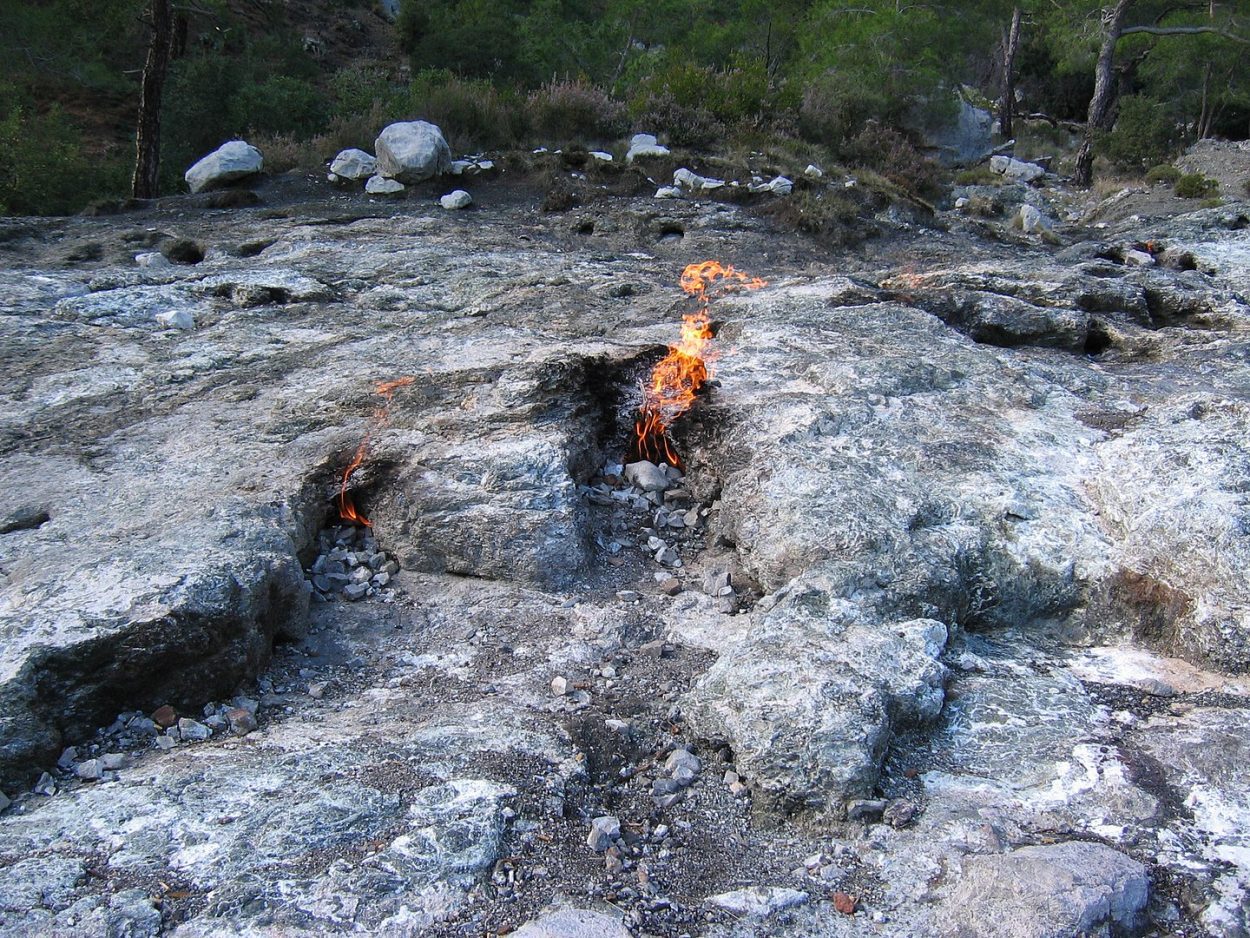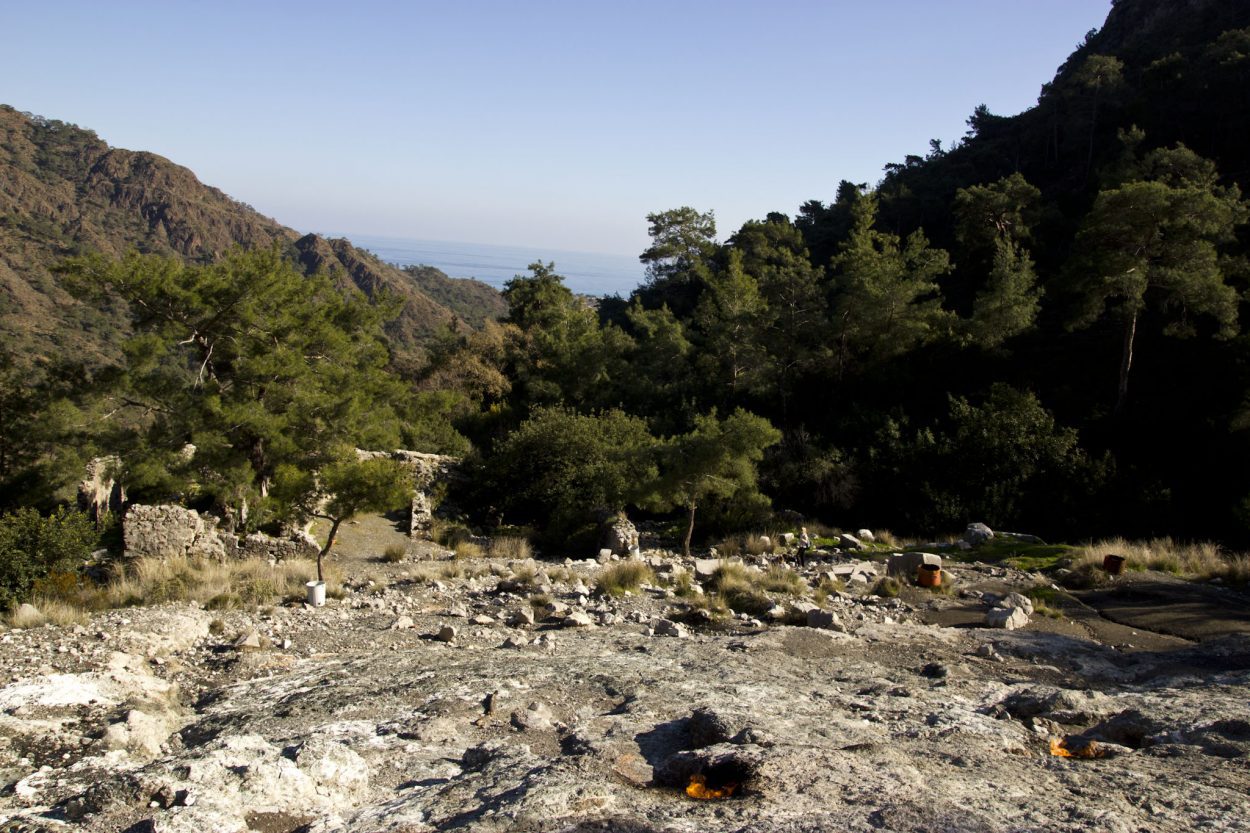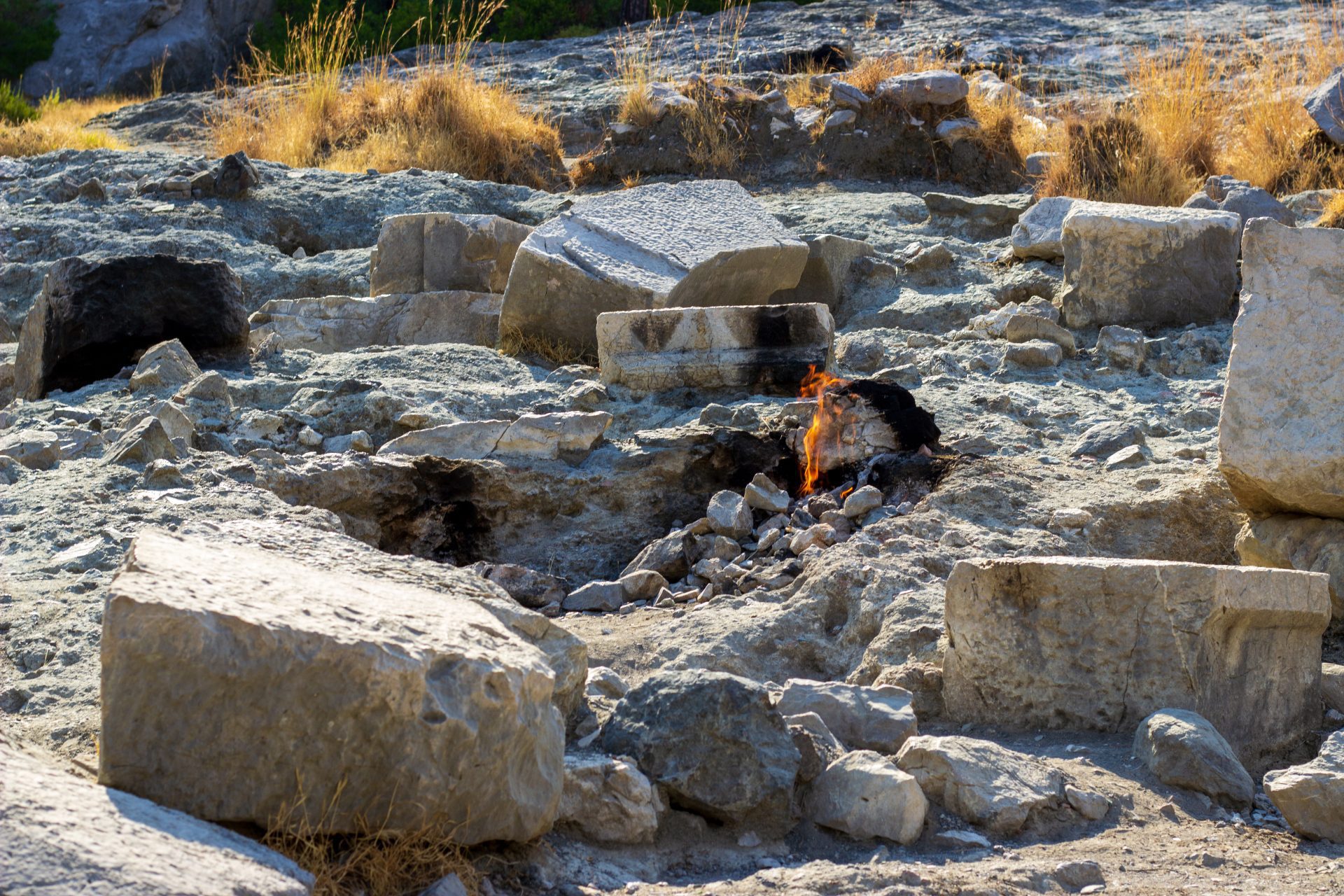Yanartaş is a mountain temple sanctuary dedicated to Hephaistos, where natural fires have been burning for at least 2500 years through fissures fuelled by gas emissions in the Olympos valley, located in the national park in Antalya Province, Turkey.
The site was identified as the ancient Mount Chimaera in a euhemerising theory (debated) by Sir Francis Beaufort in 1811, for which the Chimaera was a monstrous fire-breathing hybrid creature composed of different animal parts.
According to Homer’s Iliad, the Greek hero Bellerophon was ordered by the king of Lycia to slay the Chimaera (hoping that the monster would instead kill Bellerophon), but the hero “trusting in the signs of the gods” was victorious when he thrusted a lump of lead attached to his spear into the beast’s mouth.

The fires at Yanartaş are grouped over an area of 5000 m2, where gas flux is typically modulated by gas pressure build-up induced by groundwater recharge and changes in atmospheric pressure. The vents emit a mix of mainly methane, hydrogen, nitrogen, light alkanes and carbon dioxide that is exposed to ruthenium, a rare metal which acts as a catalyst.
Beneath the fires is a sanctuary temple dedicated to Hephaistos (Roman equivalent is Vulcan), evident by altars and statue pedestals that date from the Roman period. In Greek mythology, Hephaistos was the god of blacksmiths, metalworking, fire and volcanoes, attributed with crafting many of the legendary weapons of Olympus such as Hermes’ winged helmet and sandals, Aphrodite’s famed girdle and Eros’s bow and arrows.

During the 6th century AD, the Byzantines reorganised the site into an ecclesiastical centre, constructing a frescoed church, a chapel and several supporting structures that reused many of the ancient Roman stones for the foundations.
Header Image Credit : Huseyin Eren Obuz – Shutterstock





